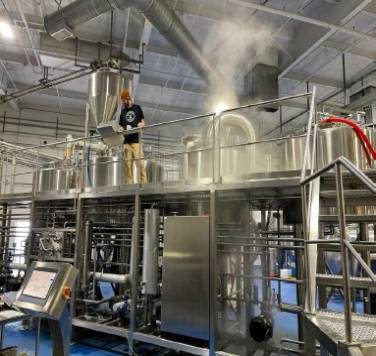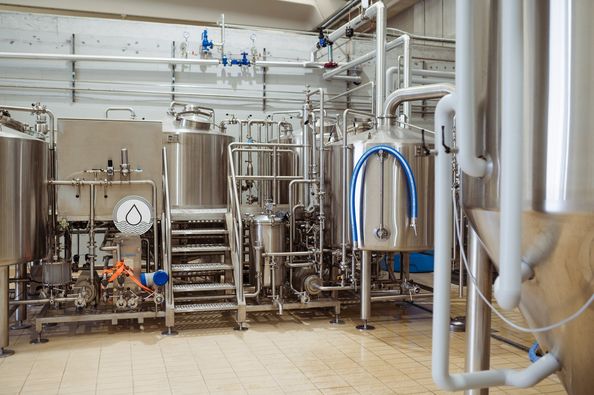Commercial Draft Beer Equipment
Overview of Commercial Draft Beer Equipment
If you’re in the restaurant, bar, or brewery business, serving draft beer can be a fantastic way to attract customers. But the right draft beer equipment is crucial for delivering a fresh, crisp pint every time. This guide dives into everything you need to know about commercial draft beer equipment, from different types and components to setup, maintenance, and price considerations. With this guide, you’ll feel equipped to make the best choice for your business, whether you’re after a simple tap system or a full-blown custom draft beer system.
Guide to Key Commercial Draft Beer Equipment
Commercial draft beer equipment has a range of specialized components that work together to ensure beer is stored, chilled, and dispensed perfectly. Here’s an overview of the essential equipment that makes up a draft beer system:
Essential Equipment Overview
| Component | Description |
|---|---|
| Keg | A pressurized container that stores the beer, keeping it fresh and carbonated. |
| CO₂ or Nitrogen Tank | Provides the pressure needed to push beer from the keg to the tap, often using CO₂ for lagers and nitrogen for stouts and certain ales. |
| Regulator | Controls the pressure of CO₂ or nitrogen, maintaining the right flow rate and carbonation level. |
| Beer Line | Tubing that connects the keg to the tap, delivering beer smoothly to the faucet. |
| Chiller | Keeps the beer at an ideal serving temperature. Various options include glycol chillers, jockey boxes, and direct draw refrigerators. |
| Tap Faucet | The dispensing point for pouring beer. Different faucets are available based on the type of beer being served, such as stout or standard faucets. |

Types of Draft Beer Equipment Systems
There are several types of draft beer systems available, each tailored to different business needs. Understanding their variations helps in making an informed choice that aligns with your goals and budget.
Comparison of Draft Beer Systems
| System Type | Description | Best For |
|---|---|---|
| Direct Draw | A simple setup where kegs are stored near the tap, often in a small refrigerator. Ideal for establishments with limited draft options. | Small bars, restaurants |
| Long Draw | Uses a glycol chiller to keep beer lines cool over a long distance between the keg and the tap, allowing multiple taps to be set up at various points. | Large bars, breweries |
| Glycol-Cooled | Utilizes a glycol chiller to maintain the temperature of beer lines, especially in long-draw systems, ensuring consistent temperature throughout the pour. | High-volume setups |
| Jockey Box | Portable draft beer system typically used at outdoor events. The beer is passed through a cooler with ice, chilling it right before it hits the tap. | Events, temporary setups |
The Brewing Process for Commercial Draft Beer Systems
Understanding the basics of how draft beer equipment works with the brewing process is helpful for optimizing operations and achieving the desired quality in every pour.
- Storage and Cooling: Beer is brewed, packaged in kegs, and stored at a cool temperature to preserve flavor and carbonation. Commercial draft systems use refrigeration units, coolers, or glycol systems to keep beer consistently cool.
- Carbonation and Pressure Management: CO₂ or nitrogen tanks provide pressure, helping beer stay carbonated as it travels through the lines. Regulating this pressure is essential to avoid foamy or flat pours.
- Dispensing: The beer travels through insulated beer lines from the keg to the faucet. When the faucet opens, the pressure pushes the beer out, delivering a perfectly poured glass of draft beer.
Designing and Customizing Draft Beer Equipment Systems
When designing a draft beer system, it’s essential to consider space, capacity, and layout to meet your establishment’s specific needs.
Capacity, Space, and Layout Considerations
| Factor | Description |
|---|---|
| Capacity | Determine the number of kegs and variety of beers to be served. High-volume establishments may require larger keg coolers or more taps. |
| Space | Available space dictates the system type. Small spaces benefit from direct draw systems, while larger spaces can accommodate long-draw systems. |
| Layout | The layout should allow easy access for maintenance and keg replacement, with considerations for customer flow and aesthetics. |
| Customization | Custom systems can incorporate unique designs, such as branded tap handles, custom tap towers, or LED lighting to enhance visual appeal. |
Popular Suppliers and Price Ranges
Selecting the right supplier can make a significant difference in the quality and longevity of your draft beer system. Here’s a look at some popular suppliers and their price ranges:
| Supplier | Typical Price Range | Specialty |
|---|---|---|
| Micro Matic | $1,500 – $15,000 | High-quality taps, faucets, and fittings. |
| KegWorks | $2,000 – $12,000 | Custom draft beer solutions |
| Beverage Factory | $1,200 – $10,000 | Full range of commercial draft systems |
| Perlick Corporation | $3,000 – $20,000 | Premium taps and refrigeration units |
| Taprite | $1,500 – $10,000 | Regulators and CO₂ systems |
Installation, Operation, and Maintenance
Proper installation, operation, and maintenance are key to ensuring the longevity and optimal performance of your draft beer system.
Installation, Operation, and Maintenance Guide
| Process | Description |
|---|---|
| Installation | Hire professionals for precise installation, including securing lines, configuring pressure, and calibrating temperature. |
| Operation | Maintain correct pressure settings, regularly clean lines, and check for any leaks or malfunctions in the system. |
| Maintenance | Perform regular deep cleaning, replace worn parts, and ensure kegs are properly stored and maintained. |
How to Choose a Supplier for Commercial Draft Beer Equipment
Choosing the right supplier can be challenging with so many options. Here’s a quick guide to consider:
| Factor | Considerations |
|---|---|
| Reputation | Check reviews, testimonials, and industry standing. Well-known suppliers are likely to provide higher quality equipment and better customer support. |
| Pricing | Compare prices across multiple suppliers to ensure a fair rate without compromising on quality. |
| Support & Warranty | Look for suppliers that offer extensive support, training, and good warranty terms to cover potential issues. |
| Customization Options | Some suppliers offer more customization, which can be an advantage if you want branded or unique draft systems. |

Pros and Cons of Different Draft Beer Equipment Systems
Each draft beer system has unique advantages and drawbacks, and comparing them can help you decide which best suits your business needs.
| System Type | Advantages | Limitations |
|---|---|---|
| Direct Draw | Easy to install and affordable | Limited to short distances between keg and tap; limited keg capacity |
| Long Draw | Ideal for high-volume or large spaces; keeps beer consistently chilled | More complex setup; higher initial cost and maintenance |
| Glycol-Cooled | Ensures consistent temperature control over long distances | Expensive setup and operating costs |
| Jockey Box | Portable and easy to use for events | Requires manual ice filling, which can be labor-intensive during busy events |
FAQs
| Question | Answer |
|---|---|
| What is the best system for a small bar? | A direct draw system is affordable, easy to maintain, and ideal for small bars with limited tap options. |
| How often should beer lines be cleaned? | Regular line cleaning every two weeks is recommended to prevent contamination and maintain quality. |
| Is it worth investing in a glycol system? | For large establishments with multiple taps over long distances, glycol systems ensure consistent temperature, improving customer satisfaction. |
| What’s the difference between CO₂ and nitrogen systems? | CO₂ is typically used for most beers, while nitrogen systems are better for stouts and other specialty beers that benefit from a creamy texture. |
| How can I reduce foam in my beer? | Ensure proper pressure settings and regular line cleaning, as dirt and incorrect pressure are common causes of excessive foam. |
Share this entry
Interested in learning more about Brewing Systems including additional details and pricing information? Please use the form below to contact us!
YOLONG BREWERY EQUIPMENT FAQS
- Commercial Brewery / Craft Brewery / Microbrewery / Nanobrewery
- What is The Difference Between Craft Beer and Industrial Beer?
- The Bespoke Differences In Custom Brewing Systems
- Everything You Need to Know About Kettle Souring
- How to Choose Brewing Equipment for Your business?
- How To Choose The-Best Partner To Build Your Commercial Microbrewing System?
- Two Detection Sensors That You Need To Use In Your Brewhouse System
- Remote Control Applications in Brewing Equipment/How does it work?
- How To Clean Your Brand New Brewery Tanks?

